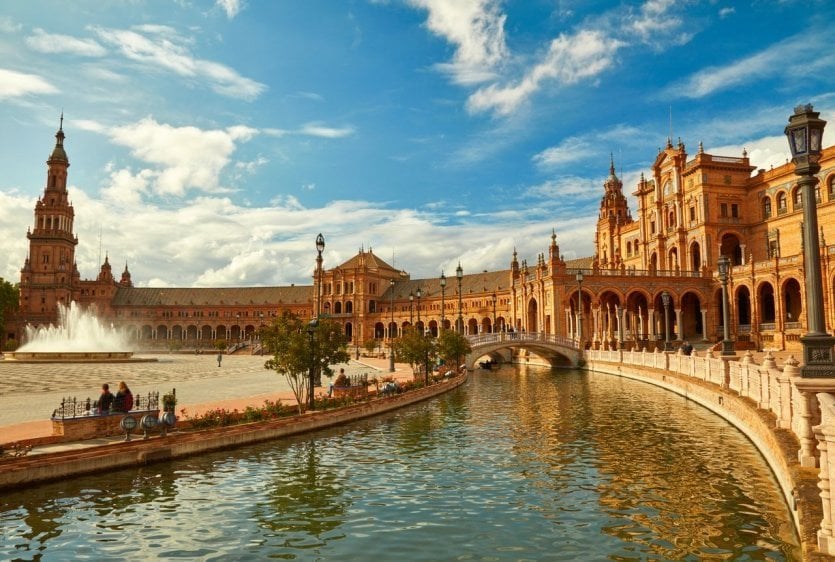
Traveling in Spain is an opportunity to discover the multiple facets of a resolutely plural country. Following the steep curves of the Costa Brava, crossing the immense plains of Castile, visiting the fishing villages of the North Coast or the unmissable Asturias, going deep into the hot Andalusian countryside and adopting its particular rhythm, between tapas, siestas and late nights. The Iberian Peninsula is full of unmissable treasures. Zoom in on the visits not to be missed.
1. The Sagrada Familia in Barcelona
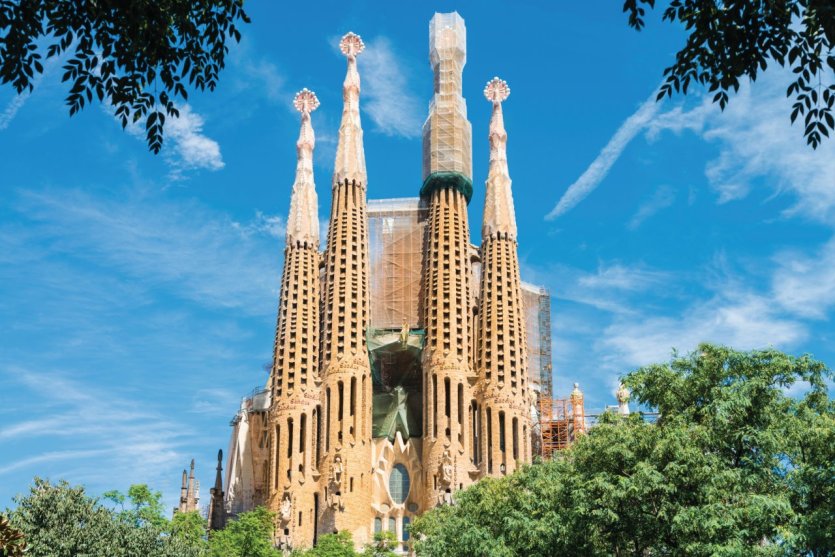
The exceptional church of the Sagrada Família was designed by the genius of architect Antoni Gaudí. This epitome of the city of Barcelona is a UNESCO World Heritage Site. More than 140 years since the laying of its foundation stone, this basilica is still not completed. This architectural marvel is the most visited monument in Spain and is obviously a must-see during a visit to Barcelona. Gaudí created a true masterpiece with 18 towers of different heights and three main facades that tell biblical stories in carved stone. The Sagrada Familia is one of Barcelona's must-sees, so it attracts a lot of tourists: remember to book your skip-the-line tickets in advance to avoid waiting at the entrance!
2. Parc Güell in Barcelona
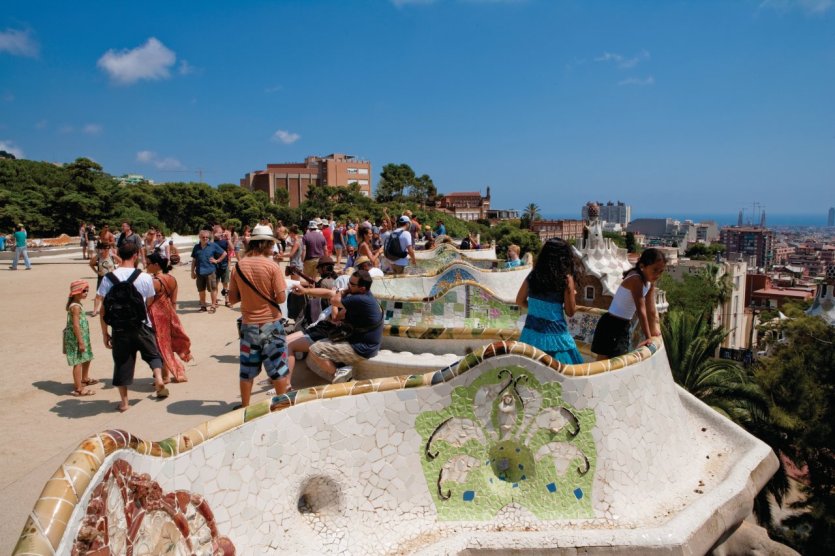
Parc Güell is once again a true symbol of the city of Barcelona and was declared a UNESCO World Heritage Site in 1984. It is a spectacular garden that is dotted with structures designed by the brilliant architect Antoni Gaudí. At the entrance, we discover the double staircase and the famous salamander all dressed in mosaics. Once at the top, we reach the covered market place supported by 84 columns. On a 60 meters difference in level, the artist has created a real spiritual path to the famous view of the Catalan city. The opportunity to take a break on the famous bench! Remember to book your ticketshere before your visit, it will allow you to avoid the wait and enjoy your visit!
3. The Picasso Museum in Barcelona

The Picasso Museum in Barcelona is located in a complex of five emblematic Catalan Gothic palaces dating from the 13th and 14th centuries. The museum highlights the close relationship between the artist and the city of Barcelona with so many unmissable visits. If the collection is splendid, the architectural ensemble also participates in an artistic unity of great beauty. The permanent collection contains more than 4,200 works, largely thanks to the legacy of Jaume Sabartés, Picasso's friend and secretary, but also to donations from the artist himself and his wife Jacqueline Picasso. A great way to dive into the vibrant world of his early years.
4. The Plaza Major in Madrid
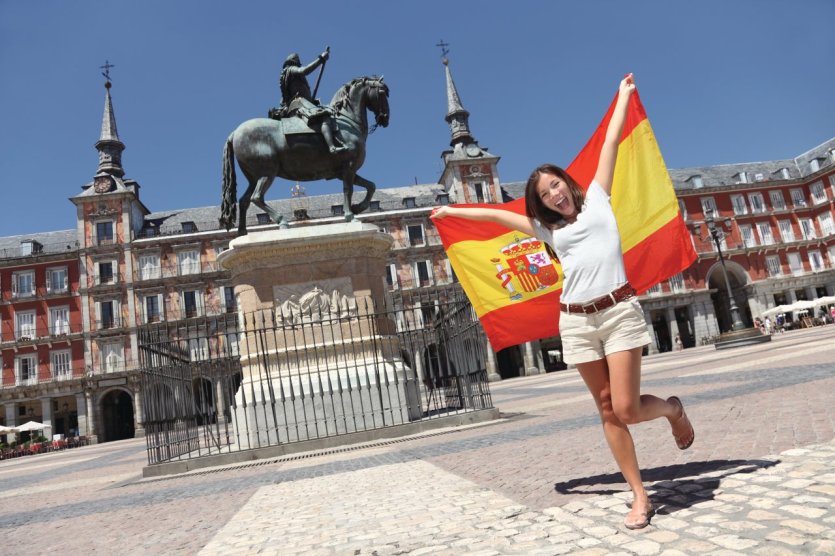
The Plaza Mayor is undoubtedly the most beautiful square in Madrid and is one of the must-sees of the Spanish capital. The site was occupied by a market at the time of the Arab domination, and even after the reconquest by Alfonso VI. The equestrian statue of Philip III, erected in 1847, now stands in the middle of the square. Throughout the 17th century, it was the scene of royal celebrations, but also of auto-da-fes and public executions during the Inquisition. In July 1631, a fire unfortunately destroyed 27 houses in the Plaza Mayor. The architect Juan de Villanueva, who was in charge of the reconstruction, later respected the original layout of the plaza, but replaced the lead in the roofs with round tiles and aligned the height of all the buildings with that of the Casa de la Panadería. Throughout the year, the square hosts a variety of fairs and cultural events.
5. The Royal Palace in Madrid
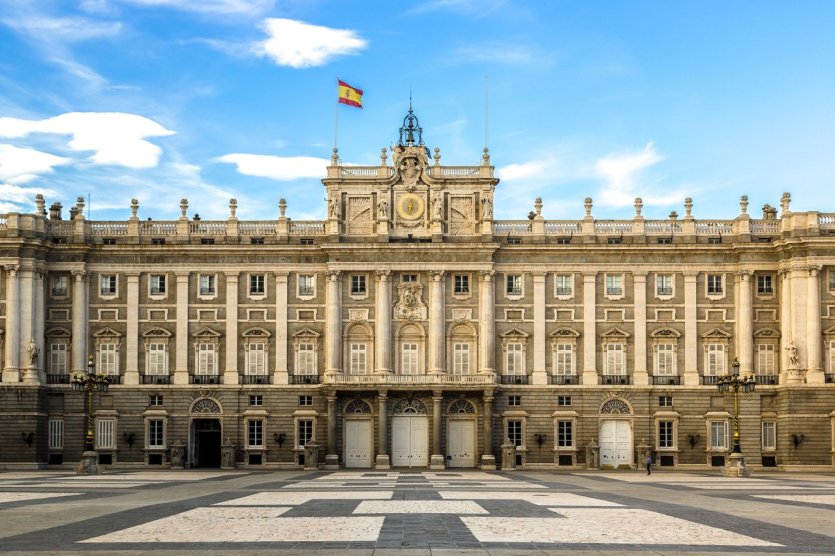
The beauty of the Royal Palace lies in the brightness of its color and the perfect quadrilateral formed by the facades. Today, the king no longer resides there but holds some official visits. In front of the magnificent Almudena Cathedral, it is a pleasure to enter the palace and, as we visit the Baroque-style rooms, we can admire superb works by Rubens, Caravaggio, Goya, Velázquez or El Greco. You can also see a vast collection of Flemish and Spanish tapestries, sculptures and beautiful clocks that elegantly decorate the rooms of this real palace!
6. The Prado Museum in Madrid
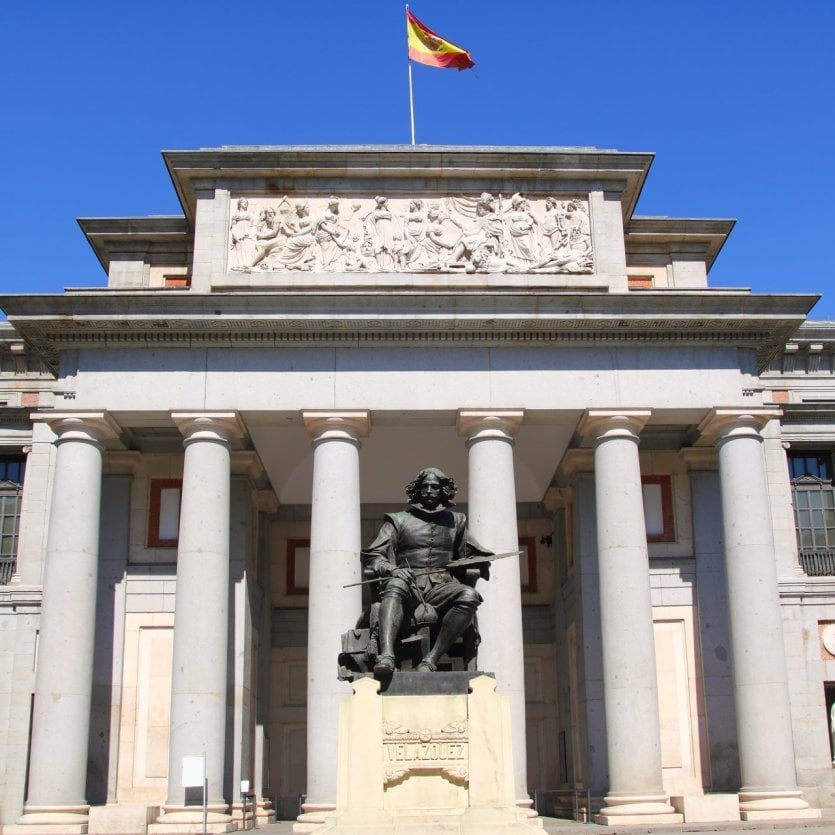
The famous Prado Museum, which celebrated its bicentennial in 2019, is a must-visit during a stay in the Spanish capital. It houses one of the largest collections of works in the country (Velázquez, Zurbarán, Goya, Murillo, Ribeira, El Greco, among others) as well as an impressive selection of European works dating from the 12th to the 19th century (Rubens, Raphael, Titian, Tintoretto, Dürer, Van der Weyden) and ancient Greek and Roman works. The building was designed by Juan de Villanueva, a famous Madrid architect, in 1786. If you don't have much time, you shouldn't miss the rooms dedicated to Spanish painting, especially those devoted to El Greco, Velázquez and Goya. To get the most out of your visit, we recommend that you reserve tickets in advance. Take advantage of our partner's rates by booking your tickets here!
7. Grenada
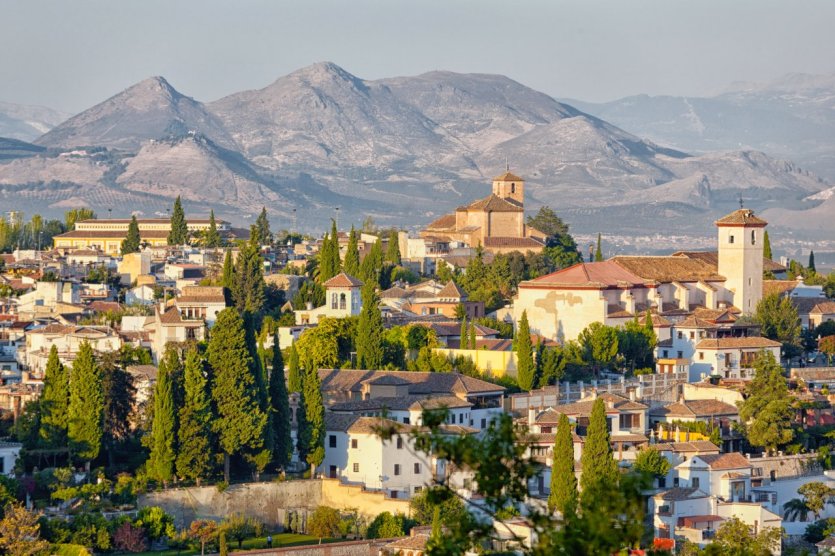
Not to be missed! Nestled in the heart of the Sierra Nevada mountains, Granada is a city that has fascinated its visitors throughout the centuries. Listed as a UNESCO World Heritage Site, it is the most eastern city in Spain. It was also the last city conquered by the Christians in 1492 during the Reconquista. Even today, Granada retains the magic and sensual torpor evoked in the early 20th century by the Spanish playwright Federico García Lorca. Its historical heritage is simply breathtaking, led by the marvelous Alhambra Palace, one of the most visited sites on the Old Continent and often considered the eighth wonder of the world. A great way to start discovering Andalusia's must-sees.
8. Cordoba
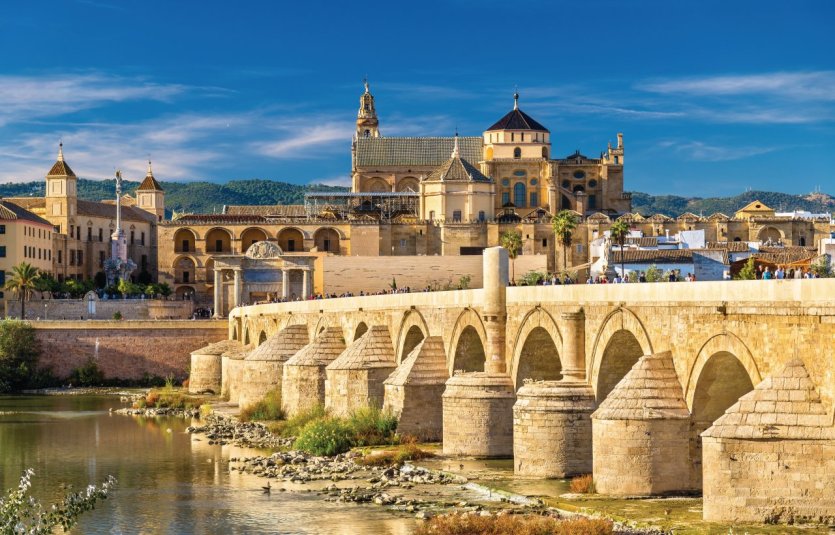
For three centuries before the Reconquista, Cordoba was the capital of Muslim Spain and a leading city of Islam. The Iberian city was the birthplace of great names such as Averroes or Maimonides, but also of mathematicians, theologians, thinkers and poets. And to discover the charm of this absolutely captivating city, you must take a walk in the Judería, the old quarter that surrounds the mosque and which is naturally listed as a UNESCO World Heritage Site.
9. The Cathedral and the Giralda in Seville
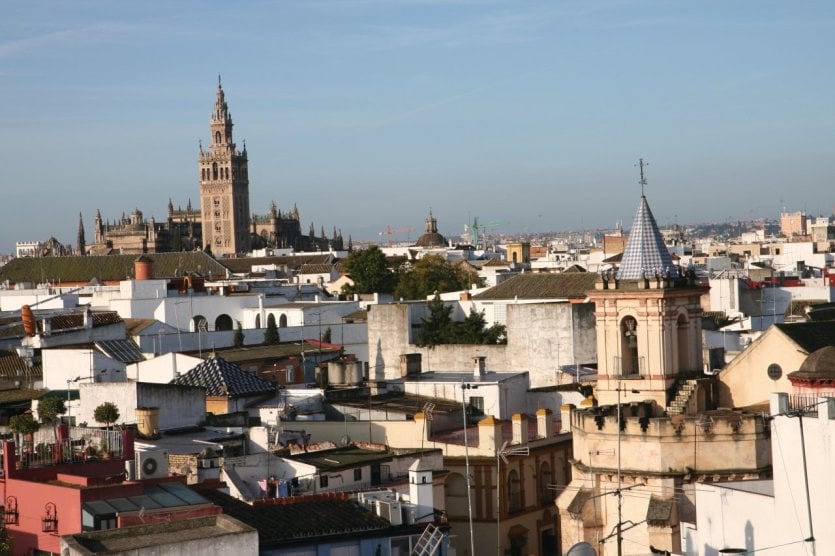
For centuries, the Cathedral and the Giralda have been the epitome of the city of Seville. An absolute symbol that also offers a sublime view of the Andalusian city, with many must-see visits. The two buildings are inseparable and above all they bear witness to the lasting triumph of Christianity on the Iberian Peninsula. It must be said that the symbol is rather powerful: the cathedral was built on the exact site of the former Great Mosque in the Almohad era... of which the Giralda was the minaret! Although the city has been affected by several wars or earthquakes, the elegant Giralda has always remained standing and is enthroned over Seville from the top of its 98 meters.
10. The Plaza de España in Seville
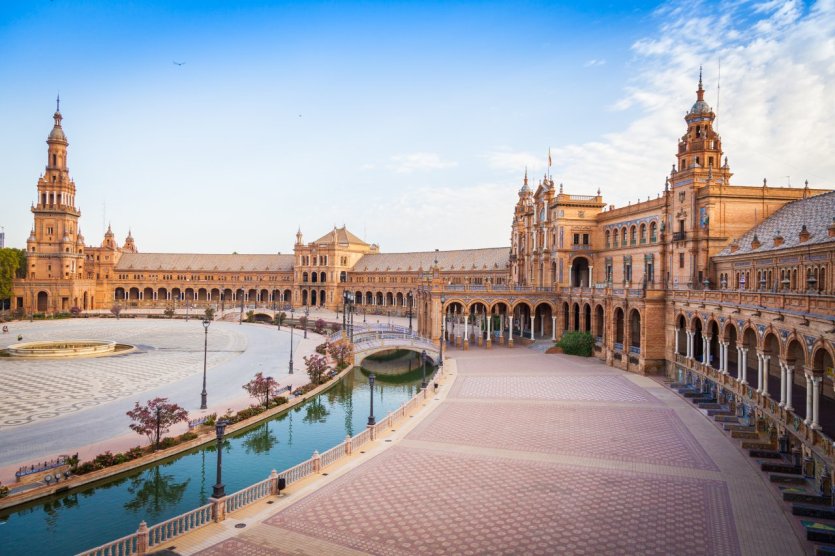
Considered one of the most remarkable squares in Andalusia and Spain, this is a true architectural gem. Located in the gardens of María Luisa, the Plaza de España consists of an impressive central palace of neo-Renaissance, Gothic and Mudejar styles, surrounded by a canal crossed by four bridges. Bridges that symbolize the ancient kingdoms of Spain: Castile, Leon, Navarre and Aragon. To enjoy it, you can go for a ride in a boat, a motorboat or even a rowing boat. To fully appreciate the beauty of this place, which has been the setting for many famous films such as Lawrence of Arabia or Star Wars: Episode II - Attack of the Clones, it is recommended to come early in the morning or late afternoon during the summer.
11. Formentera
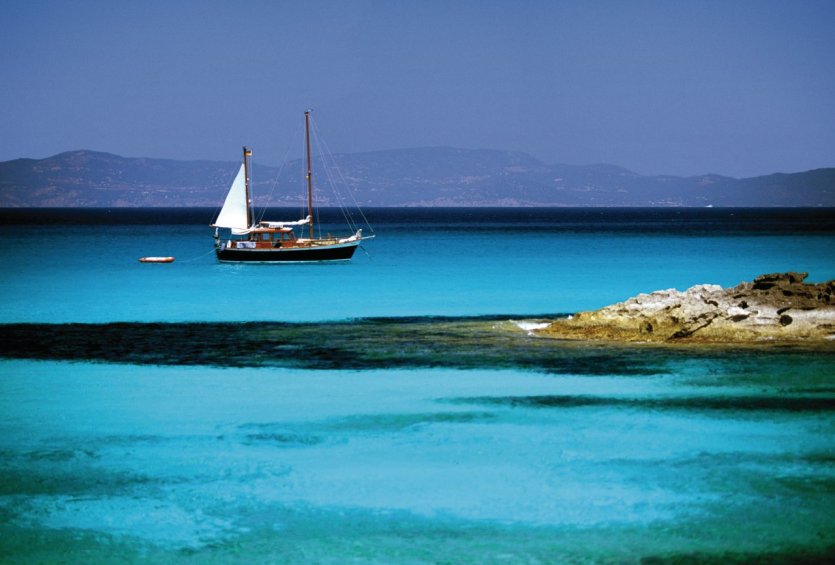
In the heart of the Mediterranean Sea, 6 km south of the festive Ibiza, the island of Formentera looks like a Tahitian lagoon with its white sand and crystal clear waters. This delightfully unspoiled Balearic island is a real little treasure of nature and great charm with its few villages, its two roads that wind between its marshes, salt flats and vineyards, its two lighthouses, its port and its marina. Unlike Ibiza, there is no airport in Formentera, and you can disembark by boat to explore the dunes, pine forests and turquoise waters of this Mediterranean rock. Formentera, where you can enjoy sailing and hiking, is also a well-known destination for scuba diving. If you want to book your cruise to this island, go here to take advantage of our partner's rates!
12. Ibiza
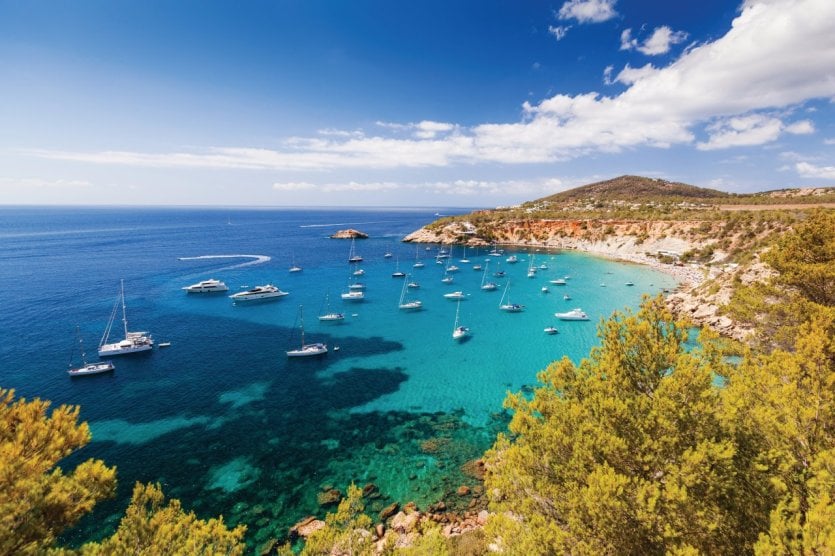
Ibiza is THE symbol of the party in Spain and even in the whole world. On the island, everything is gathered to relax, with innumerable beaches and sunny creeks, and mythical dance-floors where the best DJs of the planet put the fire until the early morning... even more. Here, cicadas and electronic music compete in decibels throughout the day. But to summarize Ibiza with its (long) evenings would be too reductive. Because on this Balearic island, lovers of culture and old stones will find plenty to do with sites listed as UNESCO World Heritage Sites, such as the Phoenician site of Sa Caleta, the necropolis of Puig des Molins or the historic center of Eivissa, Dalt Vila. When it's time to sit down to eat, head for the typical and charming restaurants that flourish in the picturesque villages of this Mediterranean island, which is definitely surprising.
13. Valencia
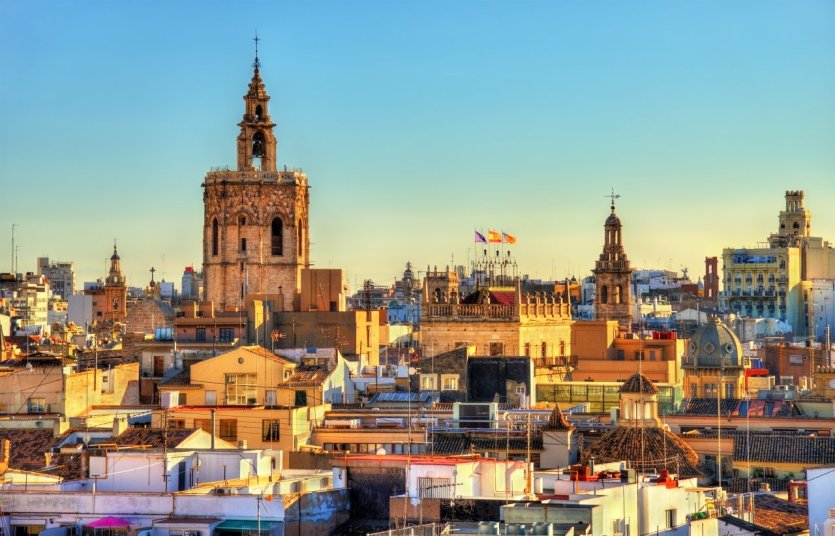
Valencia is a city located on the Mediterranean coast of the country. Although it is best known as the city of paella, the Iberian city has undertaken an ambitious urban policy in recent years to recover its former prestige. These include the installation of a 10 km long green corridor in the old Túria riverbed or the opening of the City of Arts and Sciences, designed by the architect Calatrava. A must-see building that has quickly become the emblem of the city. Although Valencia is resolutely turned towards the future, it has not forgotten its rich past either. Festivities are an important part of the city's life, and the Fallas, a huge popular festival that has been listed as a UNESCO World Heritage Site since 2016, attracts huge crowds to the streets every year. A great way to get started before discovering the charming places in the Valencia region.
14. Segovia
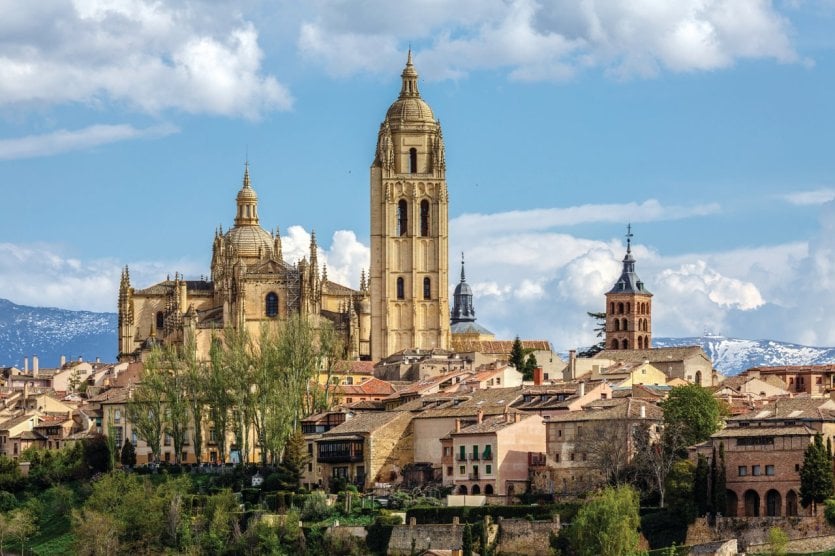
Situated about 90 km northwest of Madrid, Segovia is quite simply one of the most beautiful cities in Spain and has been a UNESCO World Heritage Site since 1985. With the largest number of Romanesque monuments in all of Europe, this city has an urban center of great architectural wealth. At the confluence of the rivers Eresma and Clamores and perched at an altitude of 1,001 meters, the city offers a cold and dry climate in winter and rather pleasant in summer, during the Castilian heat wave. Not to be missed are the aqueduct, the cathedral and the Alcazar.
15. Toledo
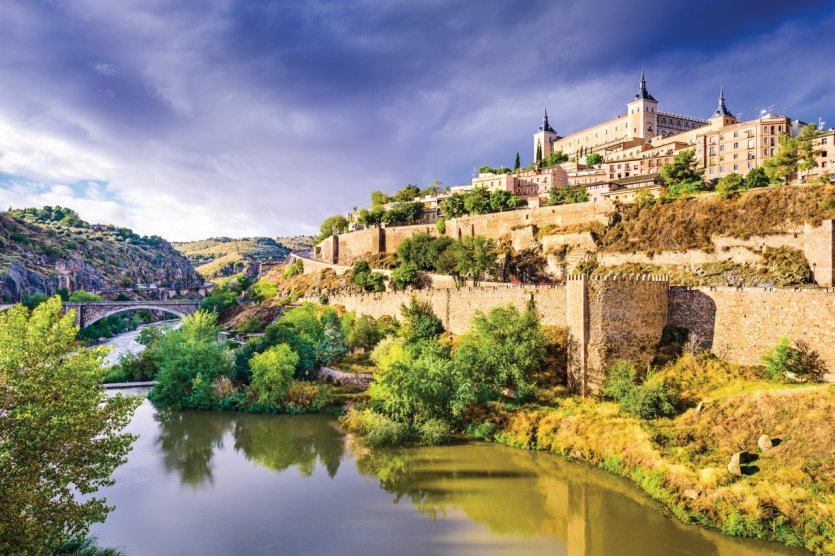
Toledo stands on a huge boulder a few dozen kilometers from the Spanish capital. The city was built on a hill overlooking the waters of the Tagus River and was the former capital of the Spanish kingdom. The Romans built a fortress there, today replaced by the Alcazar. Within its walls, Toledo is a labyrinth of typical streets and alleys and has been declared a World Heritage Site by UNESCO. This city is therefore an integral part of Spanish history, especially since it has been a place of cohabitation between the Arab, Jewish and Christian cultures throughout the centuries.
16. Montserrat
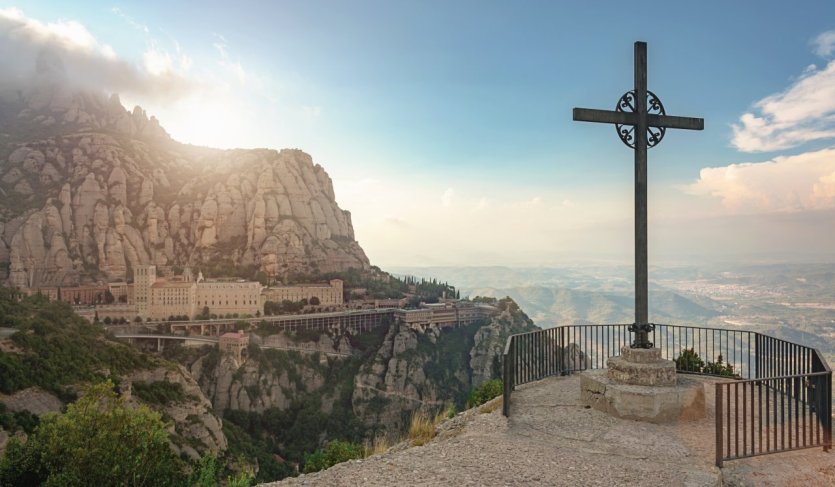
The Serra de Montserrat is an exceptional place in many ways, especially from a geological point of view. And, approaching the steep rocks of this mountain that culminates at 1,236 meters above sea level, one feels really small. The monastery was built according to the legend of the Holy Virgin. Montserrat is considered today as a high place of Catalan and Spanish Catholicism. Eighty monks live there in order to preserve this sacred place for prayer and meditation. Montserrat is also a destination of choice for hiking enthusiasts. Numerous trails crisscross the mountain, offering magnificent landscapes.
17. Ronda
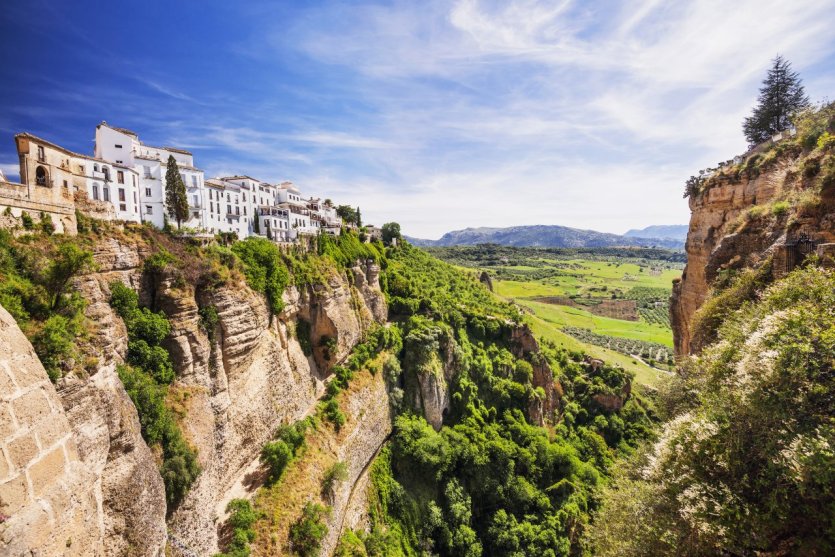
Ronda, located in a very mountainous region of Andalusia, is built on a rocky plateau abruptly cut by the impressive gorge of the Tajo and its hundred meters deep. This gorge separates the city into two distinct parts: the Ciudad, or old town, to the south, and the Mercadillo, the modern part, to the north, also called the "city of merchants. The staging of this theatrical setting, its legendary bullring and bandoleros, have contributed to the reputation of a romantic city that has fascinated many intellectuals since the 18th century. Today, the breathtaking views of the Serranía de Ronda, as well as the balconies and lookouts, continue to attract tourists, and rightly so.
18. Bilbao
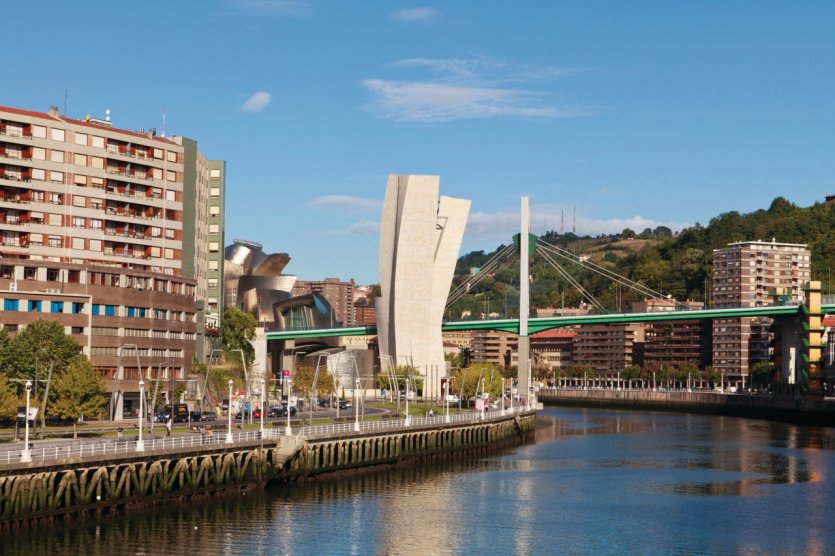
About 100 kilometers from the French border and located between the steep Atlantic coast and the green valleys of the north of the country, the always lively city of Bilbao and its surroundings offer many possibilities to its lucky visitors. The Basque city seduces first of all by its authenticity, its small picturesque fishing ports, its mountain villages and the enthusiasm with which its inhabitants perpetuate their traditions. Bilbao's historical heritage is also very rich, and it is surrounded by beautiful examples of modern architecture, starting with the Guggenheim Museum of Contemporary Art designed by the famous architect Frank Gehry. Finally, it is impossible to talk about Bilbao without mentioning its unforgettable gastronomy: in every part of the city, pintxo bars delight locals and visitors alike, who can also go to bodegas where they can find exceptional wine. The city also has some of the best restaurants in the country.
19. San Sebastián
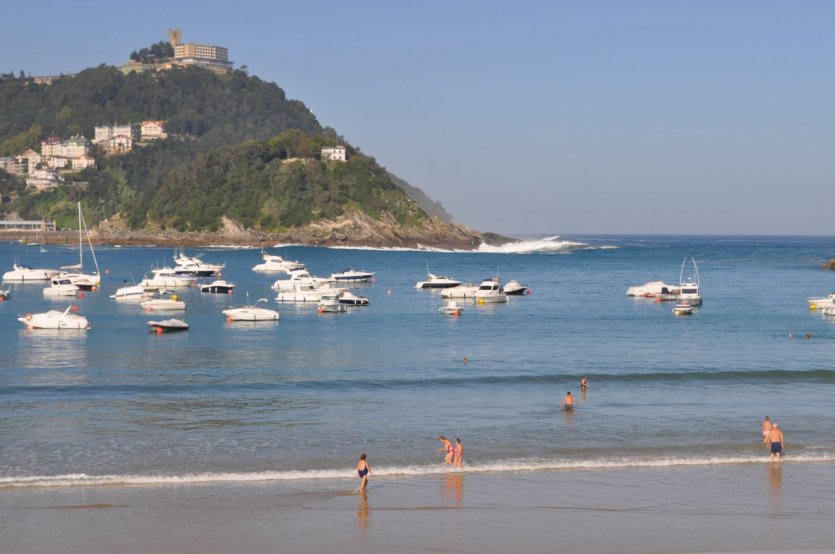
20 kilometers from the border between France and Spain lies the charming tourist town of San Sebastián (Donostia in Basque), surrounded by mountains and bordered by the sea. The city's pleasant quality of life is due to the ocean and the three beautiful beaches that border it: Zurriola, La Concha and Ondarreta, bounded by the mountains Ulia and Igueldo. The bay of San Sebastian is reminiscent of the bay of Rio with the island of Santa Clara in the center. The inhabitants of San Sebastián, called Donostiarres, like to go out, eat well and party. In the old part of the city, there are many tapas bars that delight tourists, but the city also has many excellent restaurants.
20. Málaga
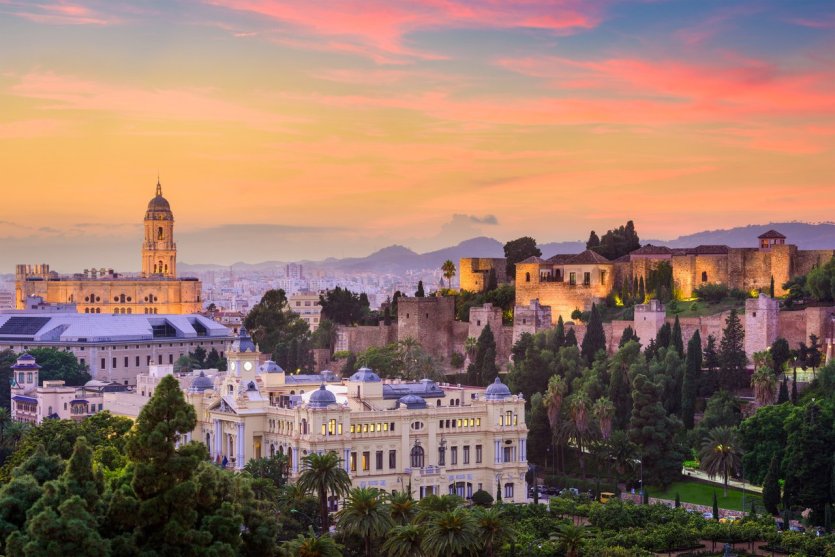
For a very long time, Málaga has been known for its sweet wines, but until the early 2000s, nothing was really done to attract tourists. In recent years, however, the Andalusian city has undergone a major transformation, renovating its streets and monuments such as the Alcazaba Palace. Museums have also multiplied since 2003 and the opening of the Picasso Museum. The magnificent Thyssen Museum has also become a must-see in the city. With a vibrant nightlife and good tapas restaurants, this Andalusian getaway is always a good idea.
21. Majorca
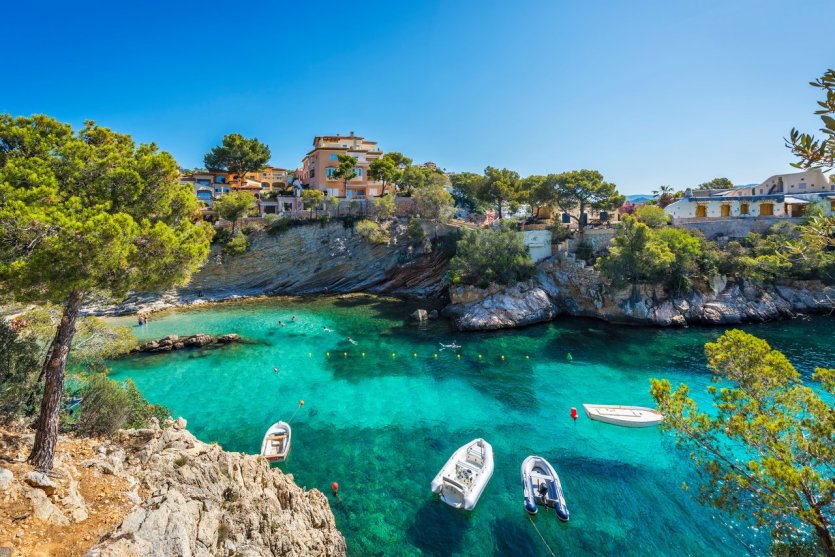
Mallorca is an island with a great diversity of landscapes, from the peaks of the Tramuntana to the rugged landscapes of Cape Formentor, from the wild coves and beaches of the eastern part of the island to the orange groves of Soller. History buffs can explore the Roman remains of Alcúdia, the caves of Porto Cristo and the architectural heritage of Palma, which will take them on a journey through the centuries. Although some areas are very touristy, Mallorca keeps all the charm of its inland villages, such as Valldemosa, Artà or Sineu, where you can live at the quiet rhythm of its inhabitants.
What to do in Northern Spain?
Northern Spain has many cities with an exceptional heritage where it is good to put down your suitcases. From Santiago de Compostela, world famous for its pilgrimage, to Zaragoza, through the Basque city of Bilbao or the festive Pamplona, there are many options just on the other side of the Pyrenees.
What to do in Spain with your family?
Spain is an ideal destination for families. The beaches of the Costa Brava, the Canary Islands, the Balearic Islands or Andalusia will delight children and adults alike, and there is no shortage of attractions to keep kids entertained throughout the country: the aquarium in Barcelona, Retiro Park in Madrid, PortAventura in Tarragona, Crocodile Park in Torremolinos... The list is endless.


